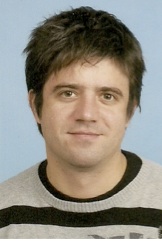Program Information
Determining Response to Anti-Angiogenic Therapies with Monte Carlo Tumor Modeling
D Valentinuzzi1*, U Simoncic1,2, B Titz2, R Jeraj1,2, (1) Jozef Stefan Institute, Ljubljana, Slovenia, (2) University of Wisconsin, Madison, WI
Presentations
MO-G-BRF-5 Monday 4:30PM - 6:00PM Room: Ballroom FPurpose: Patient response to anti-angiogenic therapies with vascular endothelial growth factor receptor - tyrosine kinase inhibitors (VEGFR TKIs) is heterogeneous. This study investigates key biological characteristics that drive differences in patient response via Monte Carlo computational modeling capable of simulating tumor response to therapy with VEGFR TKI.
Methods: VEGFR TKIs potently block receptors, responsible for promoting angiogenesis in tumors. The model incorporates drug pharmacokinetic and pharmacodynamic properties, as well as patient-specific data of cellular proliferation derived from [18F]FLT-PET data. Sensitivity of tumor response was assessed for multiple parameters, including initial partial oxygen tension (pOâ‚‚), cell cycle time, daily vascular growth fraction, and daily vascular regression fraction. Results were benchmarked to clinical data (patient 2 weeks on VEGFR TKI, followed by 1-week drug holiday). The tumor pOâ‚‚ was assumed to be uniform.
Results: Among the investigated parameters, the simulated proliferation was most sensitive to the initial tumor pO₂. Initial change of 5 mmHg can already result in significantly different levels of proliferation. The model reveals that hypoxic tumors (pO₂ < 20 mmHg) show the highest decrease of proliferation, experiencing mean FLT standardized uptake value (SUVmean) decrease for at least 50% at the end of the clinical trial (day 21). Oxygenated tumors (pO₂ ≥ 20 mmHg) show a transient SUV decrease (30-50%) at the end of the treatment with VEGFR TKI (day 14) but experience a rapid SUV rebound close to the pre-treatment SUV levels (70-110%) at the time of a drug holiday (day 14-21) - the phenomenon known as a proliferative flare.
Conclusion: Model's high sensitivity to initial pOâ‚‚ clearly emphasizes the need for experimental assessment of the pre-treatment tumor hypoxia status, as it might be predictive of response to anti-angiogenic therapies and the occurrence of proliferative flare. Experimental assessment of other model parameters would further improve understanding of patient response.
Contact Email:


